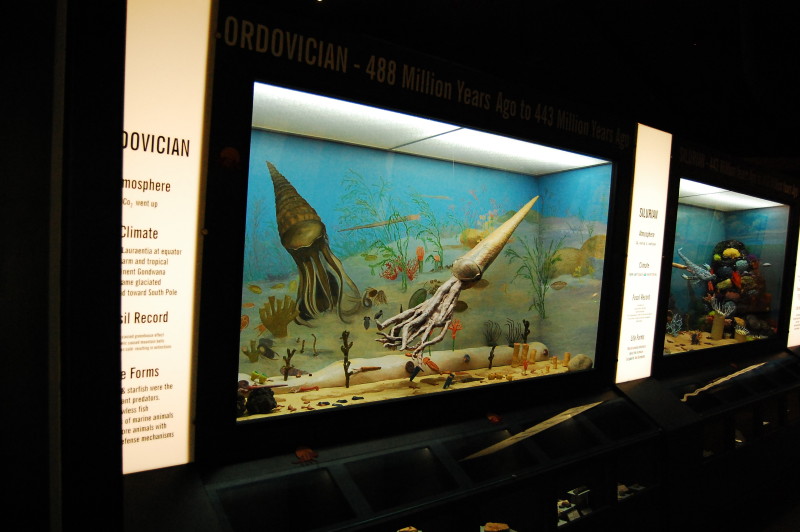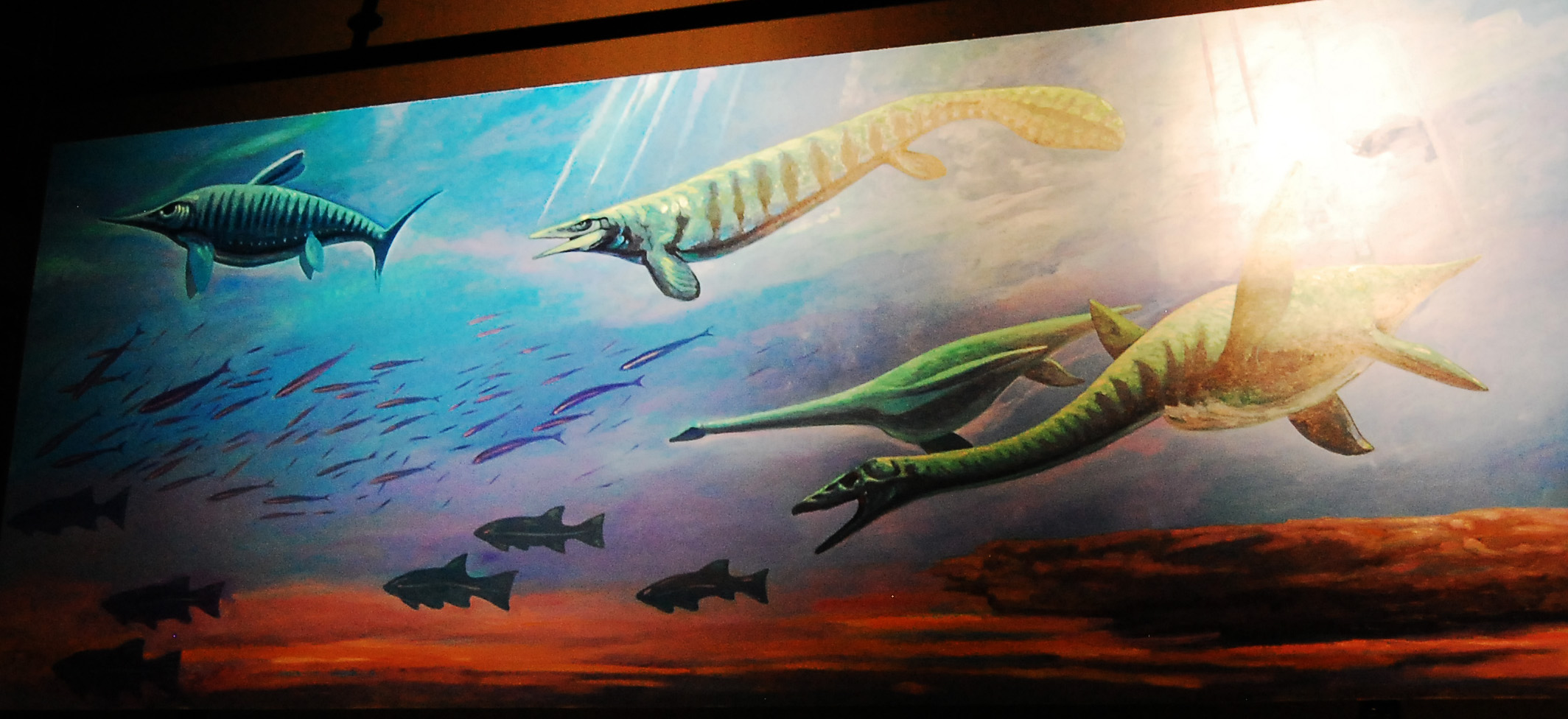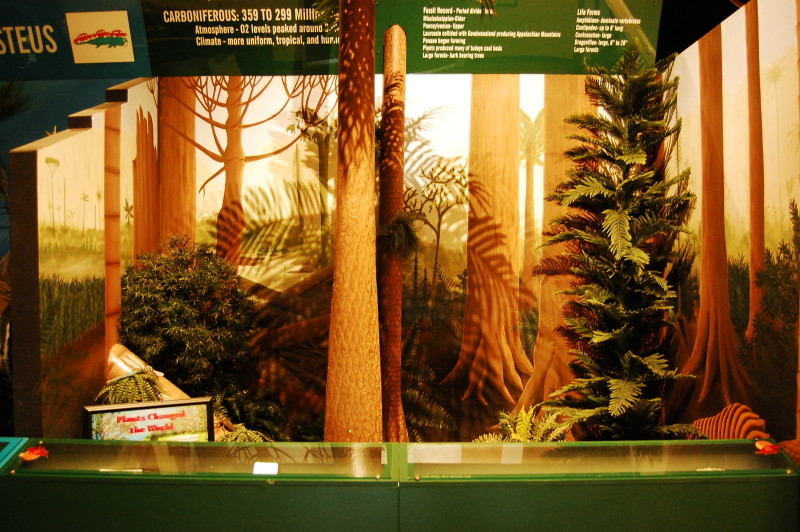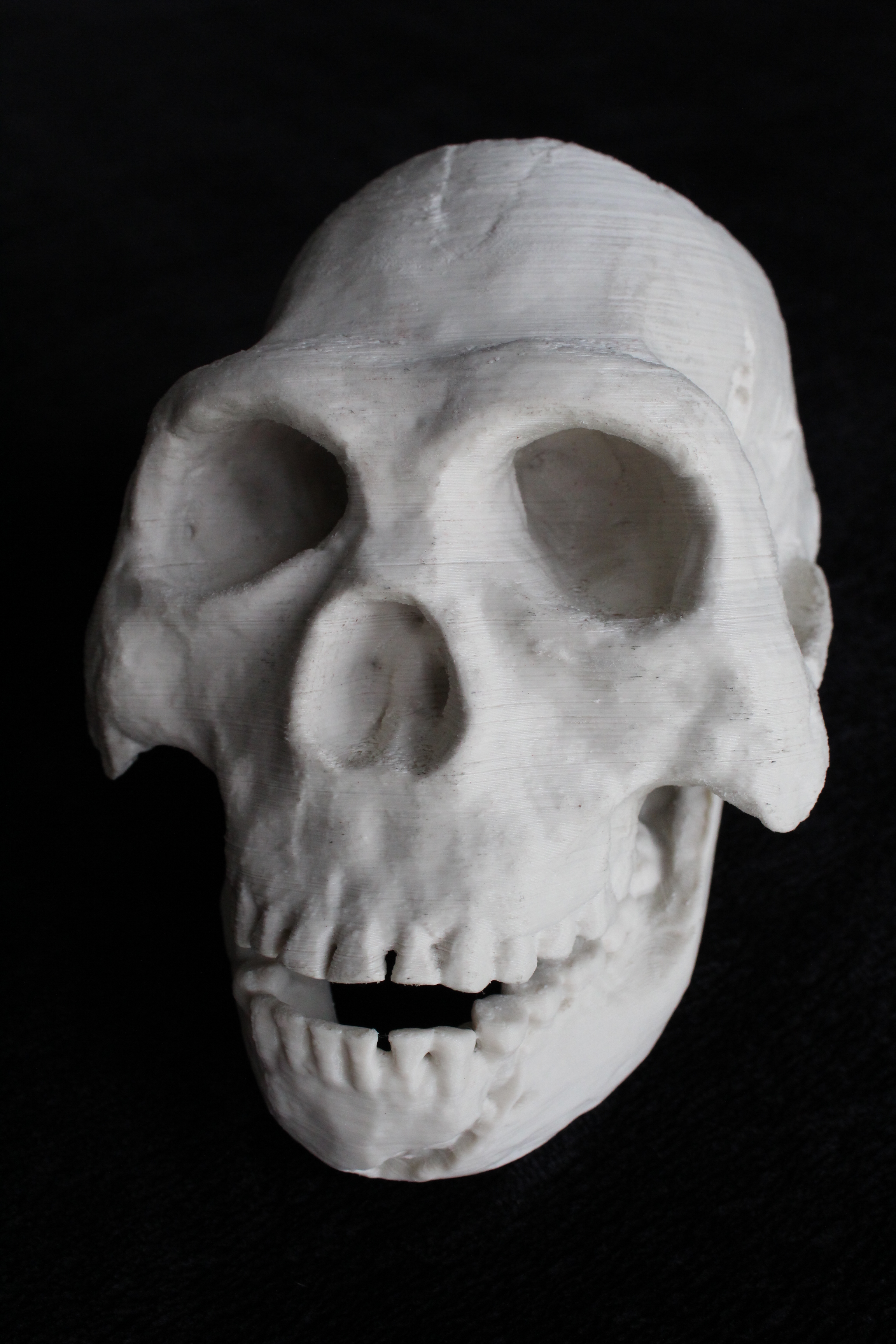The Cretaceous period had a relatively warm climate that allowed the earth to be abundant with
life. New groups of mammals and birds appeared, but dinosaurs still dominated on land. Along with many
other dinosaurs the Tyrannosaurus Rex, Triceratops, Einiosaurs, Hadrosaurs, Pterosaurs, Velociraptor, and the Brachyceratops all lived during this period. The end of the Cretaceous was marked by a mass extinction that erased dinosaurs from the earth. It is believed that that this extinction was triggered by a comet/asteroid impact on earth that had catastrophic affects on the global environment.
The Sarcosuchus is known as a “Super Croc” and lived 112 million years ago. It is a relative of the modern crocodile only much larger. The maximum body length was estimated at 36 to 39 ft. and the weight was approximately 8 tons.
The Triceratops was a herbivorous dinosaur that traveled in family groups. Triceratops means “three-horned face”. These creatures are characterized by the three horns on their skull and the large frill at the back of the skull.
Psittacosaur lived between 140-99 million years ago in Asia. Our Psittacosaur is a full grown adult.
In this case we have a fossilized cockroach and grasshopper dated to 90 million years ago. This proves
that these creatures have been around for a very long time and have evolved very little from their early ancestors.
In this diorama there is a model of a Hyphalosaurus. In the case is an actual fossilized Hyphalosaurus.
These were aquatic reptiles that lived during the early Cretaceous period.
Here are a few different Triceratops bones. We have a tendon and tooth with the root from a Triceratops.
We also have fossilized leaves found near a Triceratops in the Hell Creek formation in Montana. This helps us to know what the environment was like for these creatures, and what they may have eaten. From this information we are able to make the diorama look as close to the actual environment as possible.
In the next cases are various teeth from different dinosaurs. By looking at the teeth we can tell if a
dinosaur was a carnivore or herbivore.
The skulls that we have here are from an Allosaurus, a Raptor, and a Pachycephalosaurus. The
Allosaurus is a theropod dinosaur that lived during the late Jurassic Period. It is similar to the Tyrannosaurus Rex, however, not as large. The Pachycephalosaurus was a dinosaur that had a large, hard, bony dome on top of its skull. When the Pachycephalosaurus would encounter the T-Rex it could ram
its skull into the side of the T-Rex and possibly break its ribs, giving it time to escape




